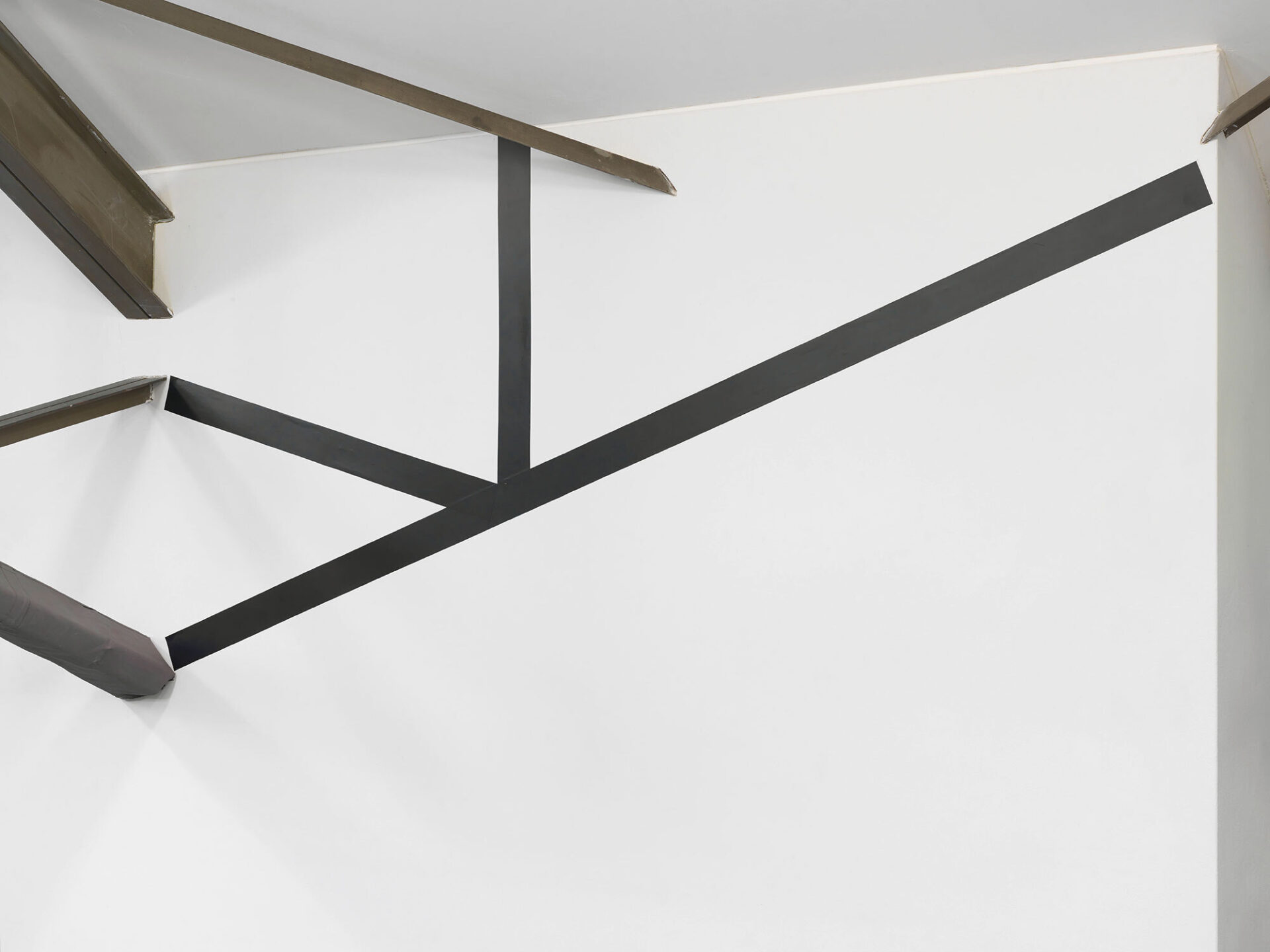
François Morellet
Without Serious Reflection
Former permanent installation in the library of Museum Haus Konstruktiv at the ewz-Unterwerk Selnau
François Morellet (born 1926 in Cholet, France, where he died in 2016) discovered Concrete Art in 1951 through Max Bill and other artists and went on to become one of its most unorthodox representatives. His work, which comprises painting, drawing, prints, objects, sculpture, installation, and interventions, is a blend of a concise methodology with a free spirit that rejects all conventions.
While he began his artistic career creating works with repetitive structures of stripes, his artistic development since 1958 has been defined by periodically changing agendas, which Morellet calls “règles du jeu,” or rules of the game. These allow him to investigate predictability and unpredictability, order and chaos, while distancing himself from what he regards as the antiquated role of the artist-genius. He first consistently applied these rules in his “trames” [wefts], which he began creating in 1958 and consist of several sets of parallel lines at angles to each other, often resulting in busy grid structures. “Untitled (Grillage)” from 1965, the portfolio project “Trames” from 1966, and the “3 simples trames 0° – 30° – 90°“ from 1966 are examples of this. Since 1960, he has also consistently followed the concept of “programmed chance,” which is always based on a predefined system of order (the picture format and the number, color, and form of elements). This order is then “filled” with a structure generated by chance.

The most prominent example of this is the series of works called “40,000 squares,” which began as painting and was then extended to include prints (the portfolio “40.000 carrés” 1960–1971). The binary system of colors in this series is based on the sequence of telephone listings in a phone book ending in even or odd numbers. In 1960, Morellet’s fascination with issues of interaction and perception led him to co-found the group GRAV, or Groupe de Recherche d’Art Visuel, which focused on the research of perception processes. He began to work extensively with kinetic neon installations that were controlled by random generators, and he covered walls and entire rooms with grid-like structures of black adhesive tape that were also based on a random principle (see “Without Serious Reflection,” 2002, installation in the library of the Museum Haus Konstruktiv). In the 1980s, Morellet began working again with mixed-media objects, to which he applied a new set of “rules” (see his “Relâches,” “Geometrees,” and “Steel Lifes” series). In the 1990s, he became fascinated with the irrational number π and began to investigate its infinite decimals, which he represented in the most diverse media – for example, in drawings that fill entire walls.
Morellet, who calls himself the “monstrous child of Mondrian and Picabia,” opened a new, innovative chapter of Concrete Art through his unique combination of reduction, methodology, and playfulness. Regardless of whether we regard him as a predecessor or a representative of postmodernism, his work will always be a constant source of inspiration.